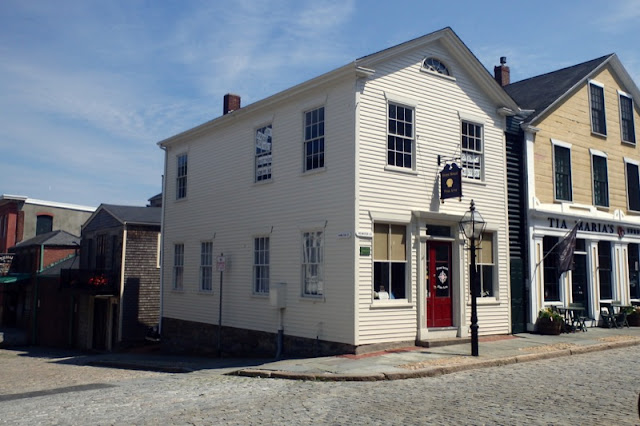“Not everything that is faced can be changed, but nothing can be changed that isn’t faced.” –James Baldwin
We’re docked in Fairhaven, which is located across the harbor from New Bedford. This area is rich in history with a port that has changed through the centuries to support a diverse population and make many people very rich.
In the 1800s whale oil lit the world and New Bedford became the greatest whaling port and the richest city per capita in the world. The city's vast fleet of whaling ships plied every ocean in the world and took the American flag into foreign ports for the first time
By the end of the Civil War whales were becoming scarce and new and cheaper means were being used to heat and light the world’s homes. New Bedford had to find a new why to change with the times. By 1900 the city was the largest producer of fine cotton cloth in the nation and led all centers in quality and quantity output of fine goods. At the height of production it employed over 40,000 people, but through the years this industry has dwindled to oversea markets.
Now New Bedford’s leading industry is fishing and is home to a large fishing fleet. We’ve never seen so many fishing boats in one harbor. It also has one of the nation’s last remaining fish auctions and has numerous other offloading facilities. Vessels from every major East Coast port unload their catch here; including every important commercial species from cod and haddock to sea scallops. During the height of the season, 500,000 pounds of scallop meats cross New Bedford docks in a single day.
Clark's Lighthouse sits atop Fort Taber (Rodman) at the entrance to New Bedford Harbor. Built in 1804
Butler Flats Light is a sparkplug lighthouse located in the outer harbor of New Bedford, at the mouth of the Acushnet River. Built in 1898
Palmer Island Light Station located in New Bedford Harbor. The lighthouse was built in 1849 out of stone rubble.
Part of the commercial fishing fleet in New Bedford Harbor
US Customs House in New Bedford first built in 1836. It is the oldest continuously operating customs house in the United States.
This building was built in 1854 and was originally used as a bank. It has served many purposes through the years, but now it serves as the Visitors center to the New Bedford Whaling National Historical Park.
The New Bedford Whaling National Historical Park encompasses 13 blocks of historic downtown New Bedford...cobble stone street and century old buildings that served the needs of the citizens during the heyday of whaling in New England.
With so much fresh seafood in the area, we decided to have a seafood platter for dinner...salmon, lobster, scallops and a clam stuffie. Definitely the besta we've ever had.












No comments:
Post a Comment